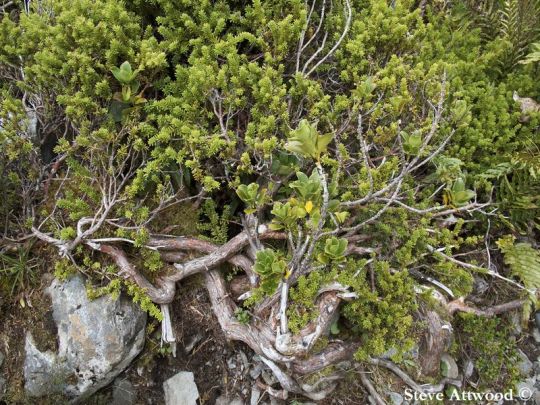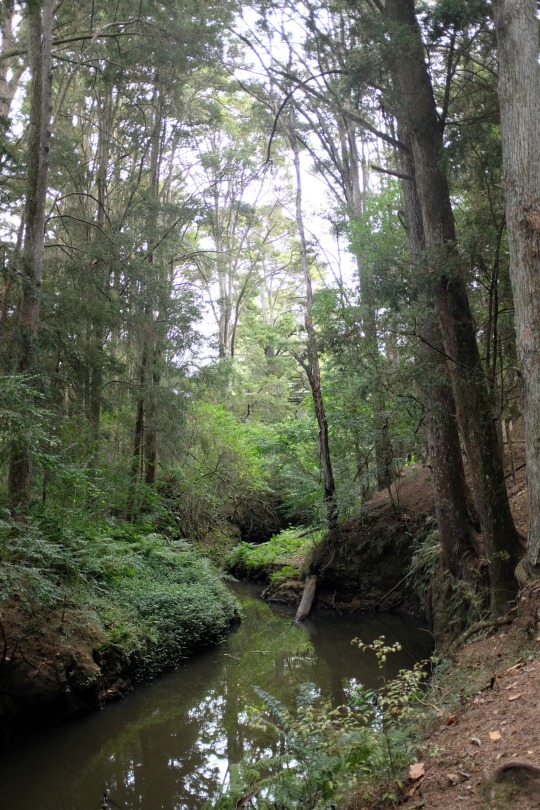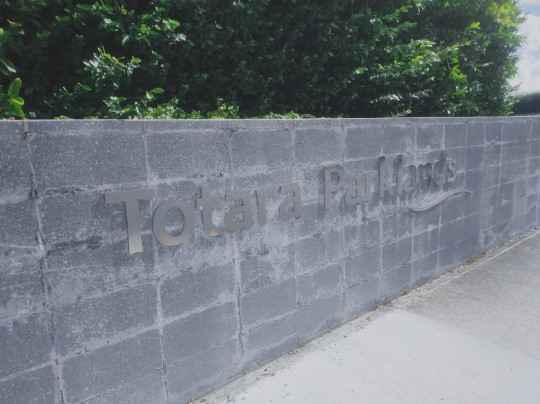#totara
Text

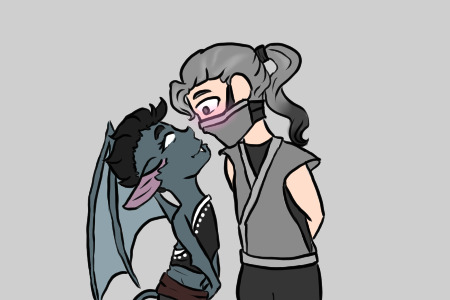

Here are all my Smoke x Nitara sketches because I think they're cute. Also you can see all my Nitara redesigns until I finally settled on one. Let the boy have a monster girlfriend.
#mortal kombat#mortal kombat 1#three princesses au#nitara#smoke#mk smoke#mk nitara#mk tomas vrbada#tomas vrbada#smoke x nitara#tomas x nitara#totara#tomas vrbada x nitara#sketches#everyone look at the baby
22 notes
·
View notes
Photo

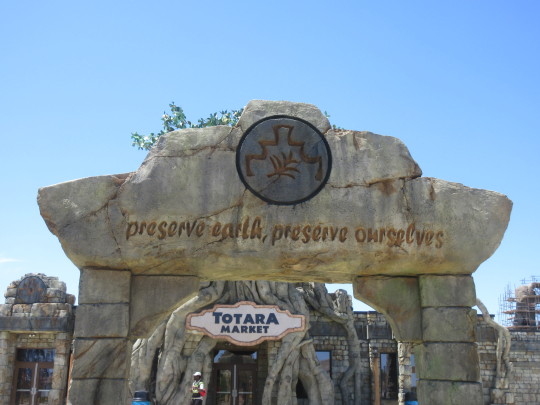
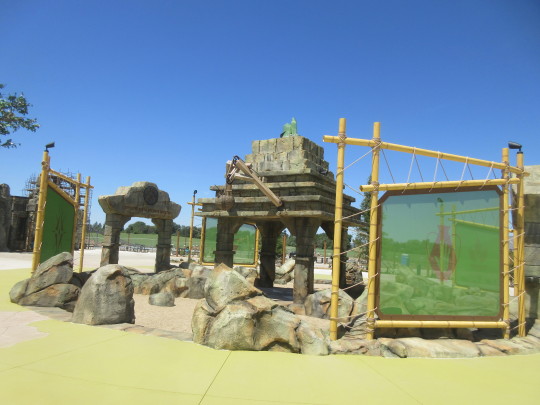
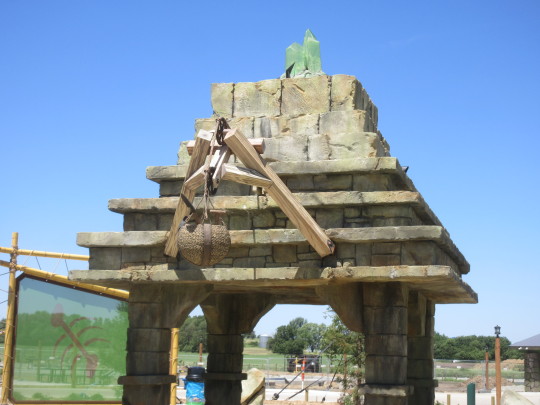

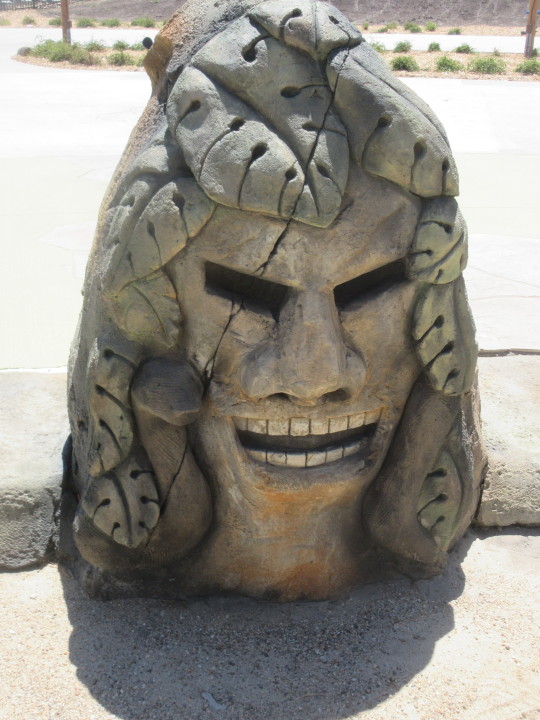
Exterior of the Totara Market restaurant and the Pengali Ruins dig box playground in Lost Island’s Yuta Realm. With Yuta Falls being pushed into next year and the Matugani coaster waiting on replacement parts, the only thing that’s running here ride-wise is the Kukui Station bumper cars.
7 notes
·
View notes
Text
designed the empty dorm room which can now be walked around in endlessly yet never left...

1 note
·
View note
Photo
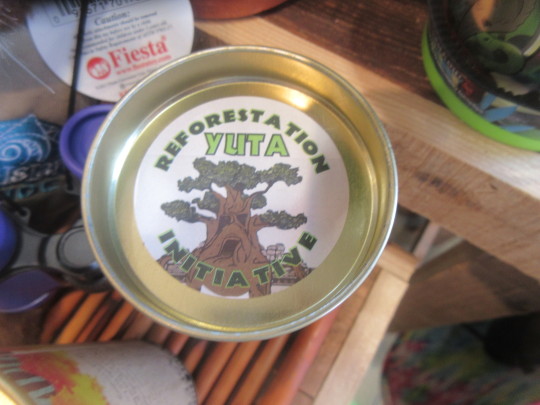
A sticker of Namua, Lost Island’s resident “Tree with a face”, they’ve applied to the “Grow a tree” kits they sell in the park’s main giftshop.
1 note
·
View note
Text

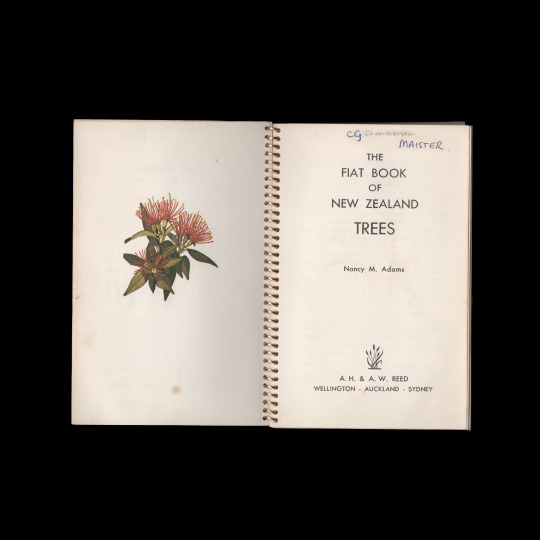
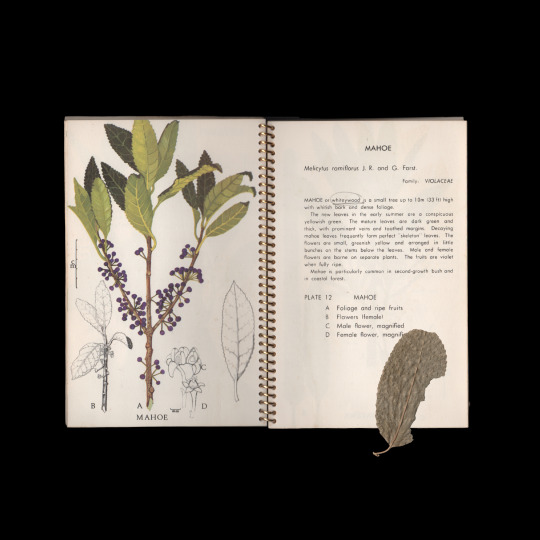
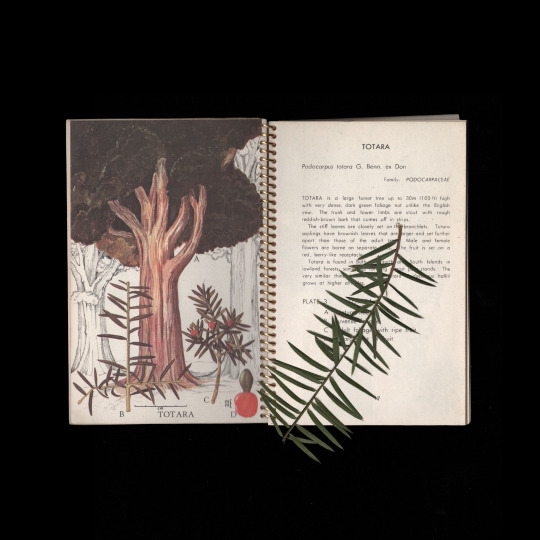

"It may seem unusual for a motor car manufacturer to sponsor the production of a book to be used be people when they are walking. Perhaps it is."
The Fiat Book of New Zealand Trees, the walking book of contradiction? Not at all. I've been told by many kiwis that the only way to get out and see New Zealand is by car. As a matter of fact, I've never been happier to see my car than after a 3-day hike on the Routeburn Track.
Between the pages, I found evidence that this little field book was put to use when little pressed leaves fell out. I even added my own when I came across a Totara tree on a recent walk.
#RTS
#returntosender
---------
Book: The Fiat Book of New Zealand Trees
Author: Nancy M Adams
Published: 1967
Found: Pressed Leaves
Date: Unknown
Owner: CG Chamberlain/Maister
#booklovers#editorial design#typography#book aesthetic#bookblog#bookshelf#bookstagram#book photography#booksbooksbooks#design#vintagefinds#vintage#thriftshop#new zealand#zine#nature#fiat#history#book club
8 notes
·
View notes
Text






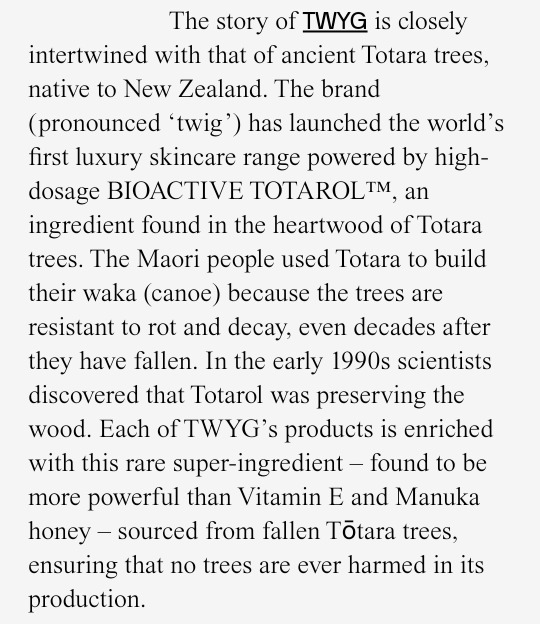


The brand collaborated with Auckland-based design studio Seachange to encapsulate this rich history in a fitting name and identity, and the team, led by Partner & Creative Director Amanda Gaskin did just that. Initial workshops with the brand led Seachange to the name TWYG, "which represents the regenerative power of the product; just as a twig is symbolic of new life, TWYG products are scientifically proven to regenerate and renew skin cell turnover," Gaskin tells us.

To centre the brand, the team custom-designed the wordmark, with soft curves in the serifs that evoke the forms of roots and branches. "We wanted to create a legacy mark that would stand the test of time, while linking back to the product's natural roots," shares Gaskin. The custom typeface is quietly supported by GT Alpina and Neue Haas Grotesk used in taglines and longer copy, which are peppered with certain words and phrases set in italics, to create moments of emphasis.
A unique challenge of the project was nailing the packaging, which was informed by the idea of 'a forest of skincare.' The totemic vessels, which Gaskin says are the "hero of the brand," resemble a forest-like silhouette when grouped together. The dramatic forms of the lids, cleverly seen as concentric circles when viewed from the top, take notes from tree rings, which develop over a tree's lifetime. "The custom lids required intricate engineering to achieve their unique shapes, particularly challenging given our commitment to using recycled plastic - a material known for its difficulty in manipulation," shares Gaskin.
The monochromatic outer packaging uses a textured stock to draw the mind to tree barks, and upon unboxing, it leads to a burst of the bright orange of the vessels - a colour that's picked from the heartwood of Totara trees, and one that ensures that TWYG products always shine in your vanity shelf.
The founders of TWYG were committed to using recycled materials whenever possible. "We went through multiple rounds and iterations to get the lids just right, and landed on an interlocking solution to make sure the recycled plastic held its shape and strength." Seachange designed the vessels to be keepsakes, and to ensure that customers can reuse and cherish the packaging for a long time, the TWYG team is currently developing refills for the full range of products.
2 notes
·
View notes
Photo

The 2-4-4-2 ‘Timber Mallet’ on static display at Glenbrook Vintage Railway (GVR) last year.
Built by ALCo and assembled at NZR Newmarket (53970/1912) for the Taupo Totara Timber Co, Mōkai. It was given the road number 7 and served with the company until 1947 when the Ministry of Works (PWD) took over the company’s fleet.
It was purchased by the Railway Enthusiasts Society in 1957 off a scrap merchant, and spent a spell on a plinth in Putāruru before being taken to the GVR and given the new identity of GVR № 4. It is currently non-operational, with no plans of further restoration.
6 notes
·
View notes
Text
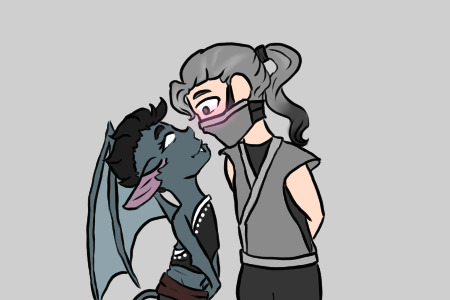
I've done it again, I tried to redesign Nitara again? Not sure about this one. Maybe too blue. Thoughts? Also there's Smoke.
#non fic post#mortal kombat#smoke x nitara#mk nitara#nitara#smoke#mk smoke#mk tomas vrbada#tomas vrbada#totara
7 notes
·
View notes
Text
Hey guys. Hope you’ve been well. I certainly have. I have been working on the farm ans helping around the house generally. I’m sorry for the long post but this really is a piece of history and a magnificent property my dad owns. Read about it’s history below and what it contains.
The distinctive style of architect Charles Natusch is stamped everywhere on Maungaraupi. Built in solid rimu, matai and totara for 3000 pounds, immense effort and attention to detail went into design and construction, for example, the timber was seasoned for three years. The magnificent home was built in 1906 for William and Elizabeth by Marton local, James McChesney.
The homestead is a spacious 836 square metres. Inside on the lower floor, there is a beautifully panelled staircase hall, complete with formal entrance hall with inglenook. Other main rooms included a stately dining room, drawing room cum library, smoking and billiards room, schoolroom, dairy kitchen and knives and boots room, with a single-story store and service wing, off to the southern side. Two verandahs and two separate toilets finish off the downstairs amenities.
The upper floor was bedrooms, servants quarters, bathrooms and loft area and two balconies. In typical Natusch fashion, much of the interior was oiled rimu floors, walls, doors and panelled ceilings.
At the rear of the house is an observation tower, or turret, with views of Kapiti Island and surrounding farmland. This observation tower has been called curious, a surprising addition to the design not typical of the time. At one time, there was also a windmill adjacent to the home.


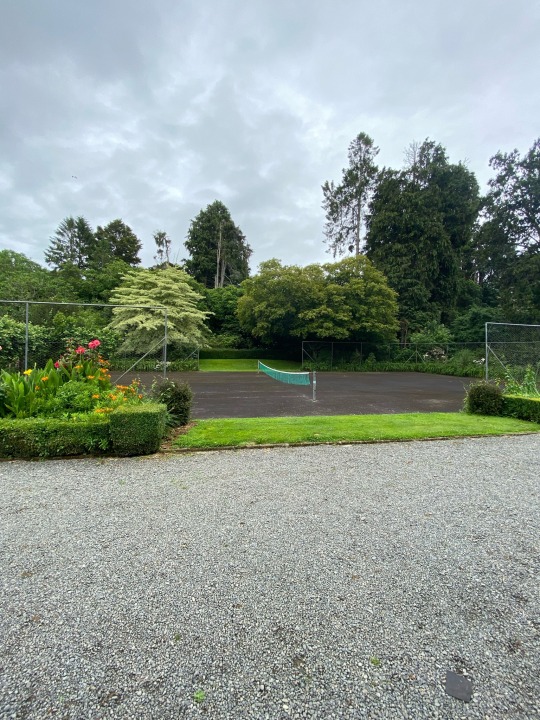

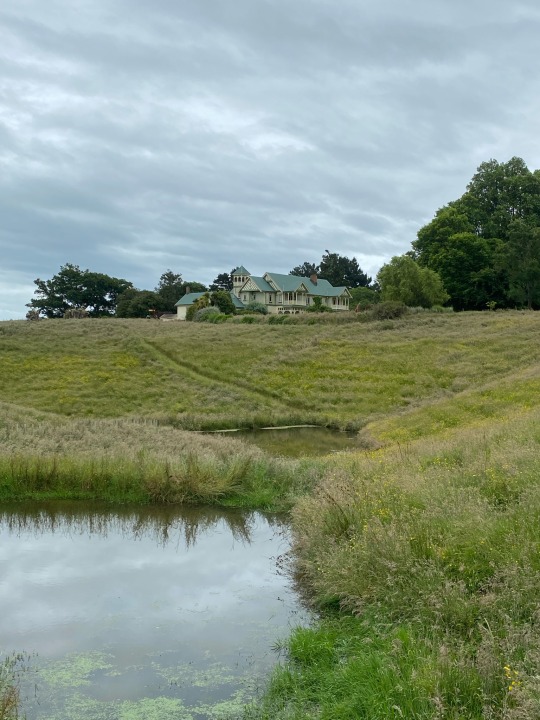
9 notes
·
View notes
Text
youtube
Watch the American Climate Leadership Awards 2024 now: https://youtu.be/bWiW4Rp8vF0?feature=shared
The American Climate Leadership Awards 2024 broadcast recording is now available on ecoAmerica's YouTube channel for viewers to be inspired by active climate leaders. Watch to find out which finalist received the $50,000 grand prize! Hosted by Vanessa Hauc and featuring Bill McKibben and Katharine Hayhoe!
#ACLA24#ACLA24Leaders#youtube#youtube video#climate leaders#climate solutions#climate action#climate and environment#climate#climate change#climate and health#climate blog#climate justice#climate news#weather and climate#environmental news#environment#environmental awareness#environment and health#environmental#environmental issues#environmental justice#environment protection#environmental health#Youtube
11K notes
·
View notes
Text
Pureroa Forest Trip
Easter, so off to the Pureora forest vai Hamilton and Te Awamutu to visit Denise's sisters. First stop the Hamilton Gardens where an Egyption garden had been added since I was last there.

On then vai Lake Nga Roto and Te Awamutu to the DOC camp at Pureroa.

Nice big camp with only about 4 other campers who appeared to be doing the Timber trail bike ride, which I plan to do part of it one day. It was cold at night like 2 degrees cold, and I knew my gas bottle was getting low. Sure thing at 4.30 in the morning I awoke to a cold van so it was out into the 2 degrees to swap gas bottles. Lesson learnt. Next day I went for a bike ride to the forest lookout finding some old machinery on the way.

Then a short tramp through the Tototara bush track where one gets to acknowledge the massive trees that once covered the country. This forest was saved from milling by protestors in 1978 to enable us to enjoy the magnificent trees.
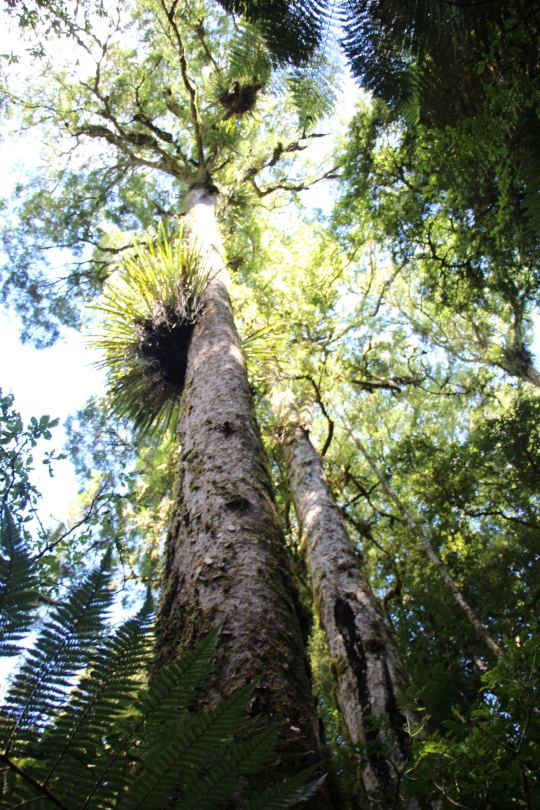
Many interesting things on this walk including a fern that looked like noodles.

The following day we walked a section of the bike trail. I was expecting a trail like I was used too, wide flat and graveled, but no this trail was narrow and twisting in and out of trees.

The trail passed an old crawler tractor that was used to gather fallen Totara logs and make them into posts and battens for the farming community. It had blown it's engine so was just left in the forest where it stopped to become an attraction on todays trail.
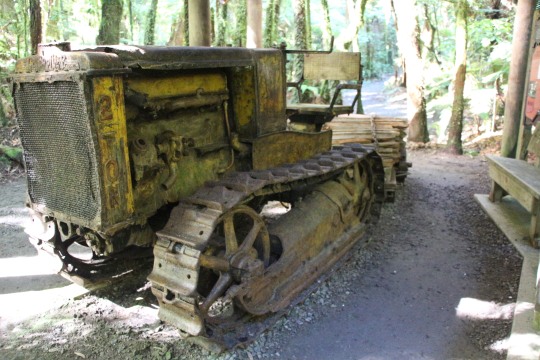
On the way back to camp passed the Easter Bunny having a nap after delivering all those easter eggs.

Next day headed to our next DOC camp at Kakaho. It was a forestry road and some of the pot holes would never see the sun, they were that deep. Passed the center of the North Island found by stringing a cut out map of the North Island to see where it balanced and this was the spot. At this DOC camp we tramped the Rimu walk through more impressive giant trees. This walk was a bit more challenging with many stairs.

But the view of Mount Pureora from the top was worth it.
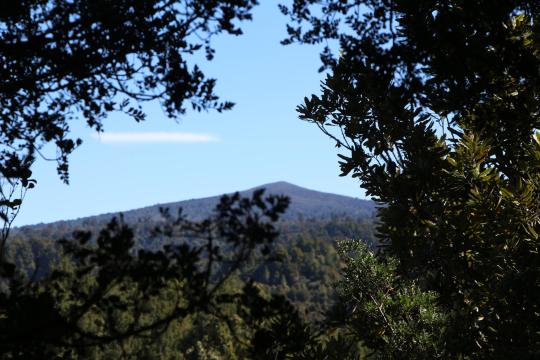
There was only one other camper here so a very peaceful final night which included tea by the fire. Home the following day, a great trip to see some of those massive trees.

0 notes
Text
github: https://github.com/KainCodes/PokemonUniversity
This is the blog page for a rather ambitious project I'm doing in my free time to make a game surrounding a player going to a University in the pokemon world with the goal to become a pokemon professor.
As part of this I am designing my own region (as yet unnamed), some new pokemon to go in it and a few pokemon training quirks to go with raising pokemon at a university.
1 note
·
View note
Text
Unlock Your Inner Learner: Top 10 Learning Management Systems for 2024

In today's whirlwind world, knowledge is power, and continuous learning is the key to unlocking that power. But with a tsunami of online courses and training platforms crashing over you, navigating the learning landscape can feel like scaling Mount Everest in flip-flops. Fear not, intrepid learner! This blog is your sherpa, guiding you through the top 10 Learning Management Systems (LMS) of 2024. So, grab your curiosity and get ready to unleash your learning potential!
1. Docebo: Think Fort Knox for corporate learning. Docebo boasts robust features like gamification, social learning, and AI-powered analytics, perfect for large enterprises seeking cutting-edge training solutions. Just be prepared for a hefty price tag and a steeper learning curve.
2. Adroit LMS: Enter the AI-powered learning revolution with Adroit! This innovative platform personalizes recommendations, simplifies course creation, and keeps costs low, making learning accessible and efficient for everyone.
3. Blackboard Learn: Remember that reliable teacher in high school? Blackboard Learn is its digital equivalent. Trusted by educational institutions for years, it offers reliable performance and flexible learning options. However, like a well-worn textbook, it might lack the sparkle of newer platforms.
4. SAP Litmos: For companies already living the SAP life, Litmos is the perfect training sidekick. It integrates seamlessly with your existing SAP infrastructure, ensuring a smooth learning experience. But venture outside that ecosystem, and its functionality might become as lost as a rogue sock in the dryer.
5. Totara Learn: Open-source? Check. Strong community? Check. Customizable features? Totara Learn is the tech-savvy organization's dream LMS, offering endless possibilities for tailoring it to your needs. Just remember, tinkering requires tech know-how.
6. GoGoTraining: Budget-conscious startups and small businesses, rejoice! GoGoTraining is your affordable and easy-to-use gateway to the world of online learning. Don't expect bells and whistles, but for basic training needs, it's a perfect fit.
7. TalentLMS: Mobile-first, engaging, and all about tracking progress? TalentLMS is your training partner in crime for blended learning programs. But if your training needs are complex, this platform might not be able to handle the heat.
8. Absorb LMS: This rising star leverages AI to empower organizations to scale learning, fuel employee growth, and drive business success. Think Netflix for your workforce, with engaging experiences and data-driven insights. But remember, like a new restaurant, it's still building its reputation.
9. EdApp: On-the-go learning that fits in your pocket? EdApp's got your back! This mobile-first platform excels at microlearning, delivering quick, relevant training bites whenever you need them. Just don't expect to build elaborate courses or generate in-depth reports.
10. Cornerstone OnDemand: User-friendly and comprehensive, Cornerstone is the golden child for mid-sized and large organizations. From intuitive course delivery tools to seamless integration with your existing systems, it's a learning haven. But expect to pay a premium for all that gold.
Remember: The perfect LMS is as unique as you are! Consider your needs, budget, and learning style before making your choice. Take demo tests, compare features, and don't be afraid to ask questions. Your ideal learning partner is out there waiting to help you conquer that Mount Everest of knowledge!
So, ditch the flip-flops, grab your hiking boots, and get ready to climb! The summit of learning awaits, and with the right LMS, you'll be there in no time!
0 notes
Text
Embracing Nature's Balance: The Role of Arborists in Canterbury
Canterbury, a region adorned with picturesque landscapes and a rich tapestry of flora, is a haven for nature enthusiasts. Arborist Canterbury the beauty of the Canterbury environment lies a silent army dedicated to preserving and enhancing its natural splendor—the arborists. These skilled professionals play a crucial role in maintaining the health and vitality of the region's trees, ensuring a harmonious coexistence between urban development and nature.
The Arboreal Symphony of Canterbury:
Canterbury boasts a diverse range of tree species, from the towering kahikatea to the elegant totara. These trees not only contribute to the region's aesthetic appeal but also play a vital role in maintaining ecological balance. However, the urbanization and development that accompany progress often pose a threat to these green guardians. This is where arborists step in, equipped with the knowledge and skills to navigate the delicate balance between human expansion and environmental preservation.
Arborists as Tree Guardians:
Arborists in Canterbury are more than just tree surgeons; they are guardians of the arboreal ecosystem. Their expertise extends beyond simply pruning branches and removing trees. They are well-versed in the science of tree biology, understanding the unique needs and characteristics of each species. This knowledge allows them to make informed decisions regarding tree care, ensuring the longevity and vitality of the green giants that grace Canterbury's landscapes.
Preserving Urban Greenery:
As urban areas in Canterbury continue to grow, the need for effective tree management becomes increasingly crucial. Arborists play a pivotal role in urban forestry, addressing issues such as tree diseases, pest infestations, and ensuring the structural integrity of trees in urban settings. By implementing proactive tree care strategies, arborists contribute to the creation of sustainable urban environments where both humans and trees thrive in harmony.
Tree Risk Assessment and Management:
Canterbury's climate, with its occasional harsh weather conditions, poses challenges to the stability of trees. Arborists employ advanced techniques for tree risk assessment, identifying potential hazards and mitigating risks to prevent accidents. Their meticulous approach involves evaluating factors such as tree health, structural integrity, and environmental conditions to determine the best course of action, whether it be pruning, cabling, or, in extreme cases, tree removal.
Community Engagement and Education:
Arborists in Canterbury don't just work behind the scenes; they actively engage with the community to foster a culture of tree appreciation and conservation. Workshops, seminars, and community tree planting events are common initiatives led by arborists to raise awareness about the importance of preserving the region's green heritage. Through education and outreach, they empower residents to become stewards of their local environment, nurturing a sense of responsibility for the well-being of the trees that grace their neighborhoods.
Navigating Challenges:
Canterbury's arborists face unique challenges, from responding to the impact of climate change on tree health to managing the urban sprawl that encroaches upon natural habitats. These challenges necessitate continuous adaptation and innovation within the arboricultural field. Arborists in Canterbury are at the forefront of embracing new technologies, such as drone-assisted tree inspections and advanced tree care equipment, to enhance their ability to protect and preserve the region's trees.
Sustainable Practices:
In an era where environmental sustainability is a top priority, arborists in Canterbury are champions of sustainable tree care practices. From recycling pruned branches into mulch to promoting organic fertilization methods, they prioritize eco-friendly approaches that minimize the environmental footprint of their work. By adopting sustainable practices, arborists contribute not only to the well-being of individual trees but also to the overall health of Canterbury's ecosystems.
The Future of Arboriculture in Canterbury:
As Canterbury continues to evolve, so too will the role of arborists. The future of arboriculture in the region lies in a holistic approach that integrates cutting-edge technology, community involvement, and a deep understanding of ecological systems. Arborists will play a pivotal role in shaping the green infrastructure of Canterbury, ensuring that future generations can continue to enjoy the beauty and benefits of a well-maintained and thriving arboreal environment.
In conclusion, arborists in Canterbury are unsung heroes working tirelessly to maintain the delicate balance between human development and the preservation of nature's wonders. Their expertise, coupled with a passion for environmental stewardship, makes them instrumental in shaping a sustainable future for Canterbury—one where the urban and natural landscapes coalesce seamlessly, creating a harmonious haven for both residents and the diverse flora that graces this enchanting region.
0 notes
Text
youtube
Watch the 2024 American Climate Leadership Awards for High School Students now: https://youtu.be/5C-bb9PoRLc
The recording is now available on ecoAmerica's YouTube channel for viewers to be inspired by student climate leaders! Join Aishah-Nyeta Brown & Jerome Foster II and be inspired by student climate leaders as we recognize the High School Student finalists. Watch now to find out which student received the $25,000 grand prize and top recognition!
#ACLA24#ACLA24HighSchoolStudents#youtube#youtube video#climate leaders#climate solutions#climate action#climate and environment#climate#climate change#climate and health#climate blog#climate justice#climate news#weather and climate#environmental news#environment#environmental awareness#environment and health#environmental#environmental issues#environmental education#environmental justice#environmental protection#environmental health#high school students#high school#youth#youth of america#school
11K notes
·
View notes
